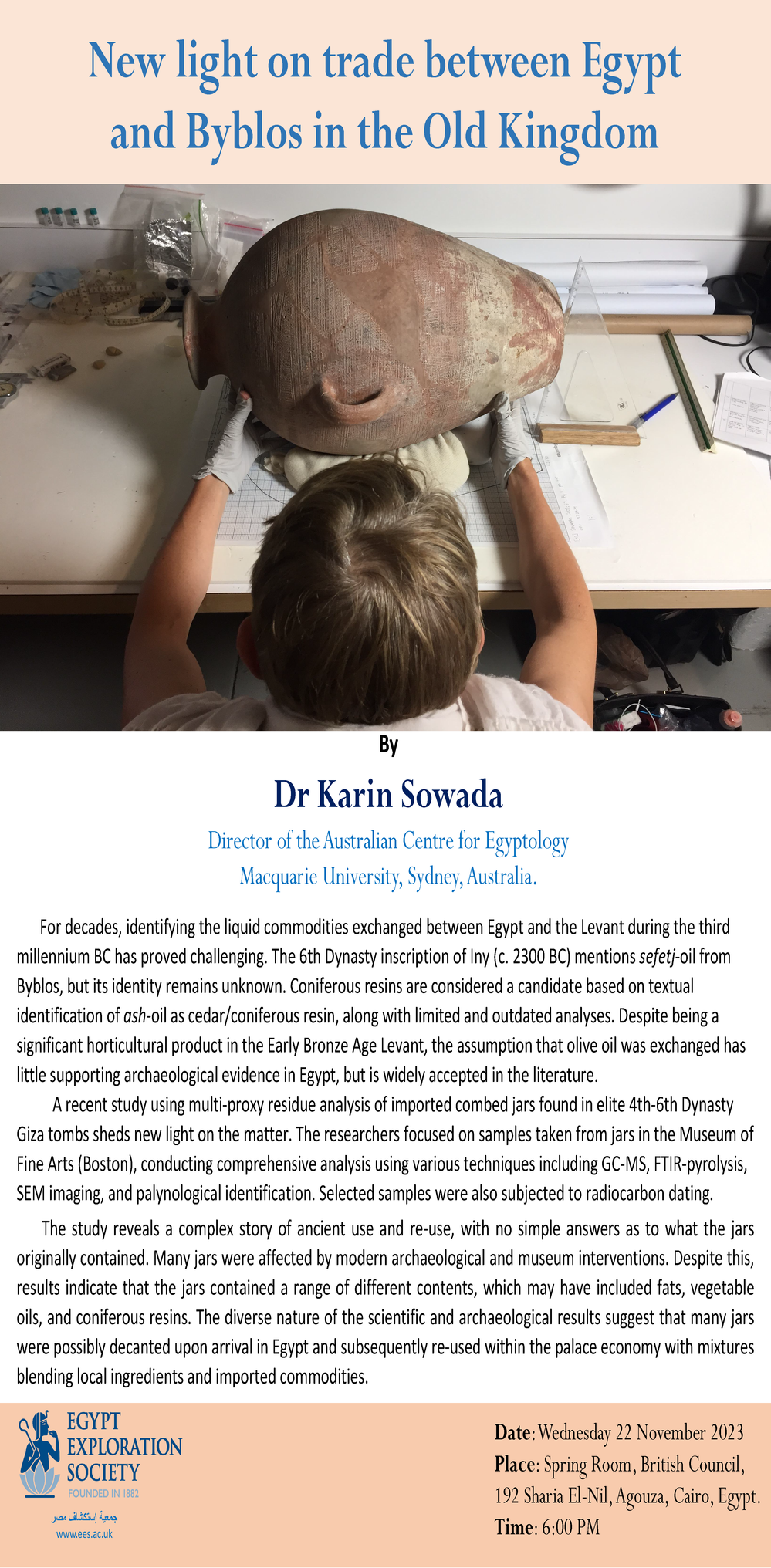6-7pm (Egypt) | This lecture is part of our in-person Cairo event programme
For decades, identifying the liquid commodities exchanged between Egypt and the Levant during the third millennium BCE has proved challenging. The 6th Dynasty inscription of Iny (c. 2300 BCE) mentions sefetj-oil from Byblos, but its identity remains unknown. Coniferous resins are considered a candidate based on textual identification of ash-oil as cedar/coniferous resin, along with limited and outdated analyses. Despite being a significant horticultural product in the Early Bronze Age Levant, the assumption that olive oil was exchanged has little supporting archaeological evidence in Egypt, but is widely accepted in the literature.
A recent study using multi-proxy residue analysis of imported combed jars found in elite 4th-6th Dynasty Giza tombs sheds new light on the matter. The researchers focused on samples taken from jars in the Museum of Fine Arts (Boston), conducting comprehensive analysis using various techniques including GC-MS, FTIR-pyrolysis, SEM imaging, and palynological identification. Selected samples were also subjected to radiocarbon dating.
The study reveals a complex story of ancient use and re-use, with no simple answers as to what the jars originally contained. Many jars were affected by modern archaeological and museum interventions. Despite this, results indicate that the jars contained a range of different contents, which may have included fats, vegetable oils, and coniferous resins. The diverse nature of the scientific and archaeological results suggest that many jars were possibly decanted upon arrival in Egypt and subsequently re-used within the palace economy with mixtures blending local ingredients and imported commodities.

Click the image to download the poster as a pdf


